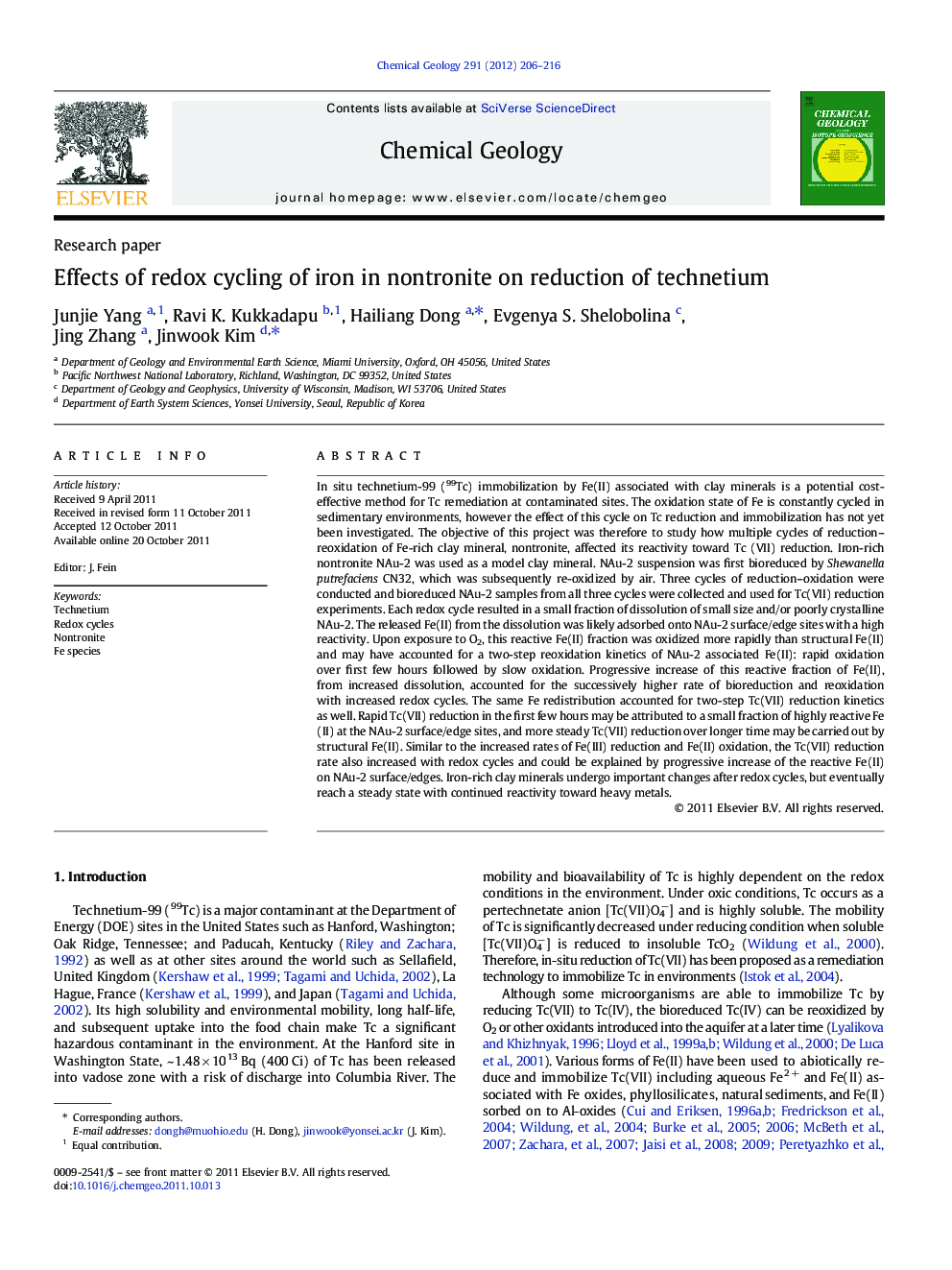| کد مقاله | کد نشریه | سال انتشار | مقاله انگلیسی | نسخه تمام متن |
|---|---|---|---|---|
| 4699581 | 1637655 | 2012 | 11 صفحه PDF | دانلود رایگان |

In situ technetium-99 (99Tc) immobilization by Fe(II) associated with clay minerals is a potential cost-effective method for Tc remediation at contaminated sites. The oxidation state of Fe is constantly cycled in sedimentary environments, however the effect of this cycle on Tc reduction and immobilization has not yet been investigated. The objective of this project was therefore to study how multiple cycles of reduction–reoxidation of Fe-rich clay mineral, nontronite, affected its reactivity toward Tc (VII) reduction. Iron-rich nontronite NAu-2 was used as a model clay mineral. NAu-2 suspension was first bioreduced by Shewanella putrefaciens CN32, which was subsequently re-oxidized by air. Three cycles of reduction–oxidation were conducted and bioreduced NAu-2 samples from all three cycles were collected and used for Tc(VII) reduction experiments. Each redox cycle resulted in a small fraction of dissolution of small size and/or poorly crystalline NAu-2. The released Fe(II) from the dissolution was likely adsorbed onto NAu-2 surface/edge sites with a high reactivity. Upon exposure to O2, this reactive Fe(II) fraction was oxidized more rapidly than structural Fe(II) and may have accounted for a two-step reoxidation kinetics of NAu-2 associated Fe(II): rapid oxidation over first few hours followed by slow oxidation. Progressive increase of this reactive fraction of Fe(II), from increased dissolution, accounted for the successively higher rate of bioreduction and reoxidation with increased redox cycles. The same Fe redistribution accounted for two-step Tc(VII) reduction kinetics as well. Rapid Tc(VII) reduction in the first few hours may be attributed to a small fraction of highly reactive Fe(II) at the NAu-2 surface/edge sites, and more steady Tc(VII) reduction over longer time may be carried out by structural Fe(II). Similar to the increased rates of Fe(III) reduction and Fe(II) oxidation, the Tc(VII) reduction rate also increased with redox cycles and could be explained by progressive increase of the reactive Fe(II) on NAu-2 surface/edges. Iron-rich clay minerals undergo important changes after redox cycles, but eventually reach a steady state with continued reactivity toward heavy metals.
► Multiple redox cycles of nontronite alter its structure and chemistry.
► Multiple redox cycles of nontronite also alter reactivity toward Tc(VI) reduction.
► Despite changes from these cycles, nontronite remain reactive toward Tc(VII) reduction.
Journal: Chemical Geology - Volume 291, 6 January 2012, Pages 206–216